This process improves deliverability and protects your reputation.
Ready to boost your email success rate? Let’s see how you can make your email domain a trusted sender.
What is email domain validation?
Email domain validation is a key process in email marketing and security. It checks if an email domain is registered and able to send emails. This is super important to prevent fraud and increase deliverability. When a domain passes this check, it indicates that its emails are likely legitimate and capable of receiving them.
In short, email domain validation keeps your communications safe and guarantees they reach your audience. If you want to make sure the emails you send reach their intended destinations, spending a few minutes extra on validation is only logical.
Why does email domain validation matter?
Consider this: nearly half of all daily emails are spam. Shocking, right? Email verification steps in to tackle this issue.
Email validation grants you:
Reduced bounce rates
Validating email addresses is very important for keeping bounce rates low.
By verifying each domain, you can be sure that emails reach active, valid addresses. Imagine sending fewer emails that vanish into thin air.
This process can slash your bounce rates by up to 98%. That’s huge! Lower bounce rates improve your sender reputation.
They also boost the performance of your email campaigns. With validated emails, your messages land where they should, not in digital limbo. Use domain validation to keep your communication smooth and effective. Don’t let unchecked emails drag your efforts down.
Fewer spam complaints
Validating addresses means you don’t send messages to non-functional email addresses.
You get fewer spam complaints. This protection is super important for maintaining a strong sender reputation.
Consider the impact: your emails reach interested recipients more often. The efficiency boosts your campaign’s effectiveness and your inbox security.
Improved deliverability
Email validation directly improves your deliverability.
Here’s how: it keeps your list clean with only valid addresses. This simple activity means more emails land in the right inboxes, not spam folders. Think of it as tidying up before a big mail-out. You remove what doesn’t work and keep what does.
This clean-up boosts your chances of hitting your target. It’s essential for any effective email campaign.
👉 Read more: How to find business email addresses? A list of best tips and tools.
Increased engagement rates
Sending emails to valid, engaged recipients boosts your open and click-through rates.
Valid addresses mean you’re reaching real people interested in your message, which results in more opens and clicks. Every email sent has a purpose, and validating your list guarantees that each email meets its mark.
The outcome? You see better engagement across your campaigns. This isn’t just good for stats; it’s indispensable for building relationships with your audience.
Time and cost savings
Avoiding bounced emails saves email marketers both time and money.
How? By focusing on valid addresses, you skip the hassle and cost of dealing with failures. This efficiency means you can invest more in what works. Redirect funds and efforts toward crafting effective email marketing campaigns. Less waste, more impact.
Think of it as trimming the fat from your strategy. You cut out what doesn’t perform, and you boost your ROI. Make sure every dollar and minute counts.
Enhanced reporting
Email validation sharpens your reporting. It gives you accurate data on your email list.
What does this mean for you? Better analysis of your campaign performance. You see exactly what’s working and what’s not. As a result, clarity helps you make smarter decisions. Adjust strategies based on solid data, not guesses. Every report you generate becomes a tool for improvement.
Increased ROI
Email validation drives a higher return on investment from your email campaigns.
How? By verifying that each email hits a valid inbox, you waste less time on addresses that won’t result in a response.
This strategy leads to better open rates and conversions. Every email counts when your list is clean. You spend less money on bounced emails and reach more interested customers. The boost in efficiency directly impacts your bottom line.
Investing in email validation maximizes the effectiveness of every campaign. Make the most of your marketing budget, validate your emails, and increase your ROI. It’s a smart move for any serious marketer.
The email domain validation process explained
Bouncer goes through several stages when verifying an email:
#1 Syntax validation
Bouncer starts by checking the email format. It looks for errors like missing “@” signs or misplaced dots.
A small typo can mean your email never reaches its destination. This step makes sure each email address is set up to succeed. It’s a quick, automated process that saves you from future headaches.
You guarantee that your emails reach their intended audience by fixing these simple mistakes. So, before you send out another campaign, let Bouncer tidy up your list.
#2 Domain verification
Next up, Bouncer checks the domain. This step involves a DNS lookup to confirm the domain is valid and active, including checking the domain’s MX records, which determine the mail servers responsible for receiving emails. You want to make sure the domain can receive emails.
A non-existent domain or incorrect MX records means your email bounces back. Checking this saves you from wasting efforts on dead ends. It’s like confirming the address before sending a letter. If the domain is up and running, and the MX records point to active mail servers, your email has a real shot at delivery.
A regular check keeps your email list clean and your engagement rates high.
#3 Mailbox verification
After domain checks, Bouncer moves on to mailbox verification.
Here’s how it works: Bouncer sends a special message to the mail server. It’s seeking a valid response to confirm the mailbox exists and can receive emails.
Even if an email address has the right format and a valid domain, the mailbox might not be active. You’ll avoid sending emails into a bottomless pit.
👉 Read more: How to Do Email Address Format Validation.
#4 Spam trap and disposable email detection
Next, Bouncer tackles spam traps and disposable emails. It checks if an email is linked to a spam trap or is a temporary address.
Spam traps can hurt your sender reputation. Disposable emails often mean a short-term interaction. Identifying these helps you avoid pitfalls in your email campaigns. Remove risky emails from your list before they cause trouble.
#5 Categorization
Finally, Bouncer categorizes each email: valid address, invalid, risky, or unknown. It gives you clear insights into the quality of your email list. You see which emails are safe to use and which might cause issues. This sorting helps you decide your next move. Send confidently to valid emails. Review or remove risky and invalid addresses.
Uncertain about ‘unknowns’? Double-check them. Use this data to optimize your strategies and get better results. Precise categorization makes managing your email efforts more straightforward and more effective.
In Bouncer, you have two ways to validate emails – either in bulk or one email at a time. Here’s a step-by-step process.
Single email validation in Bouncer
Go to usebouncer.com.
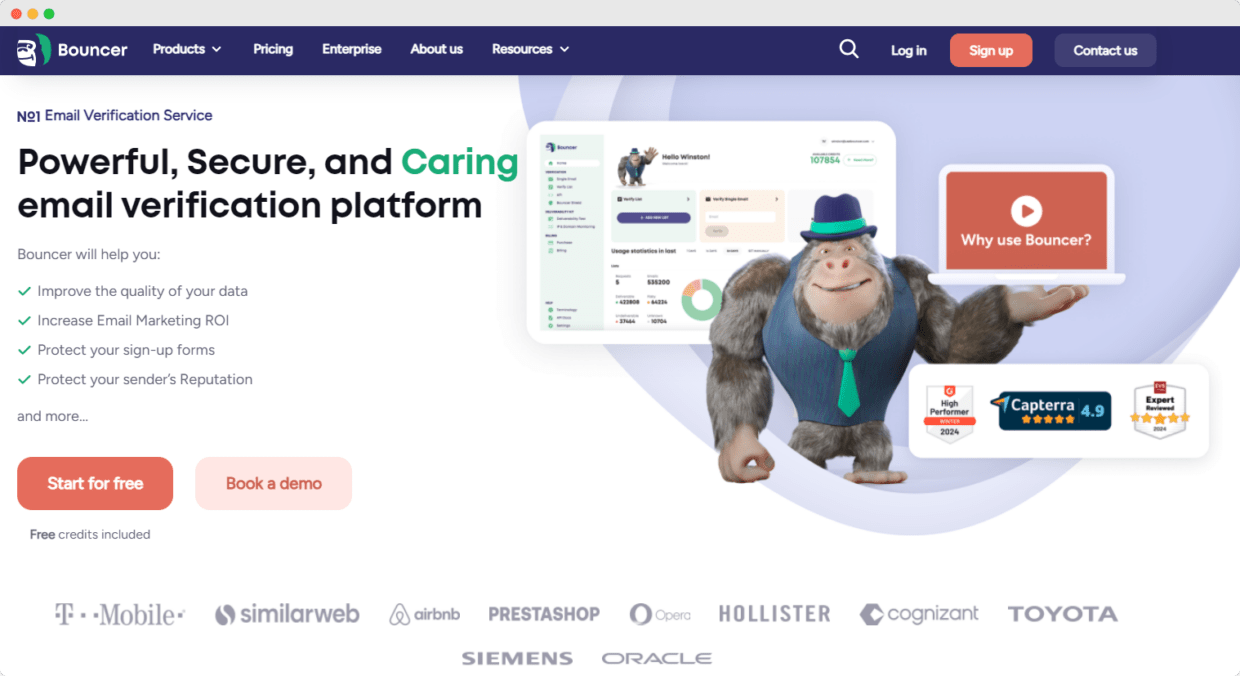
Create a free account.
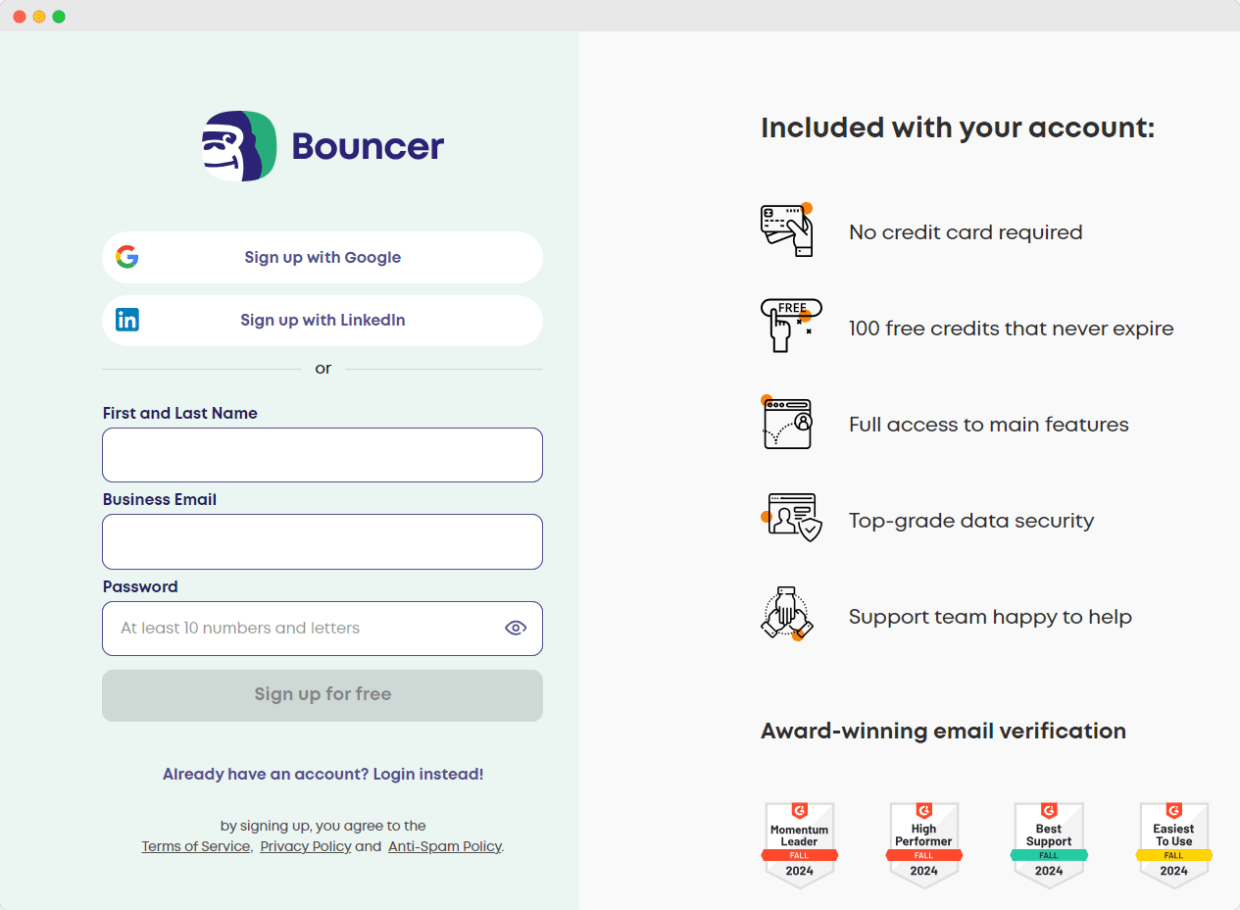
Enter the email in the Verify Single Email field.

Click on Verify.
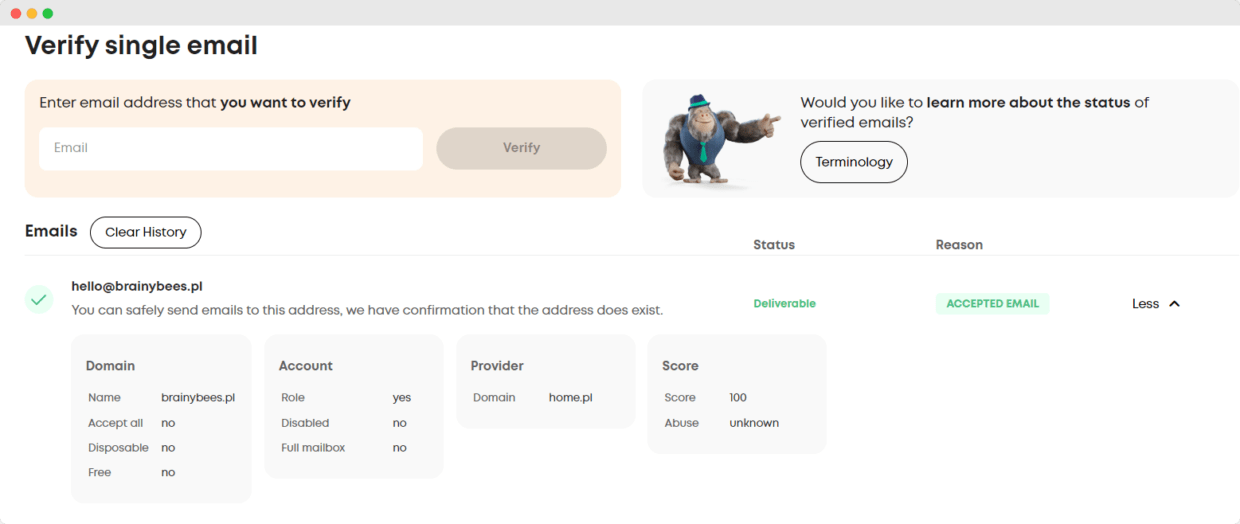
Even though the process is quite complex, the result appears almost immediately.
That’s it!
Bulk email domain validation in Bouncer
Get a list of emails. You can do it by surveys, email marketing, lead generation techniques, gated content, etc.
Click Add New List. You will be prompted with a window to either copy and paste your emails or import a spreadsheet. Either way, the results will be the same.

Click Copy & paste.
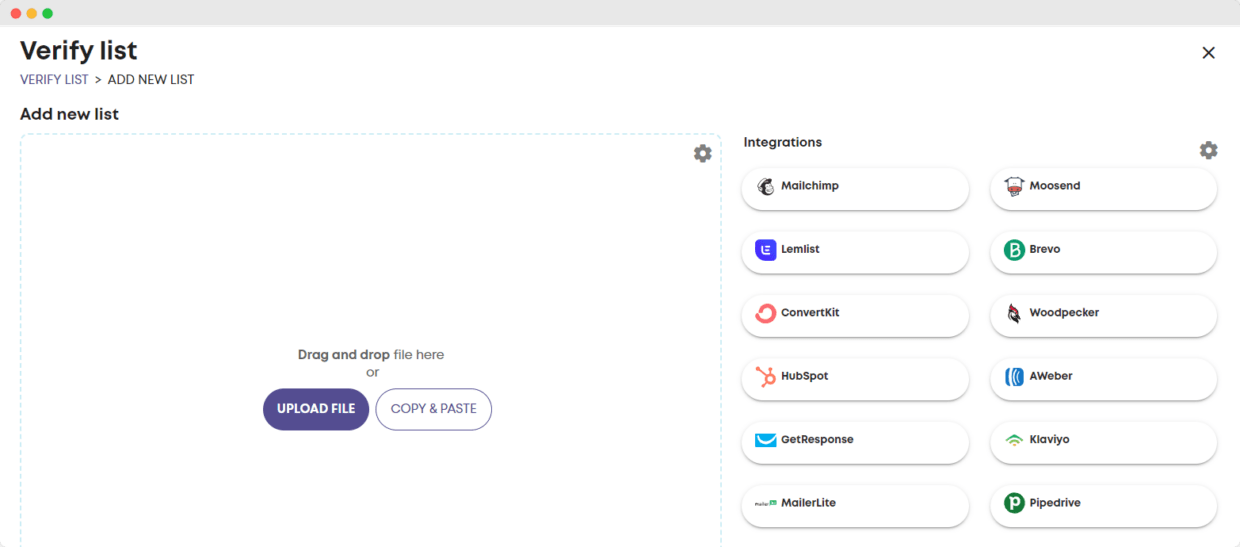
This is what it should look like. Then, you can click Proceed. Bouncer will go through the steps mentioned earlier, but this time it will do it for all the emails.
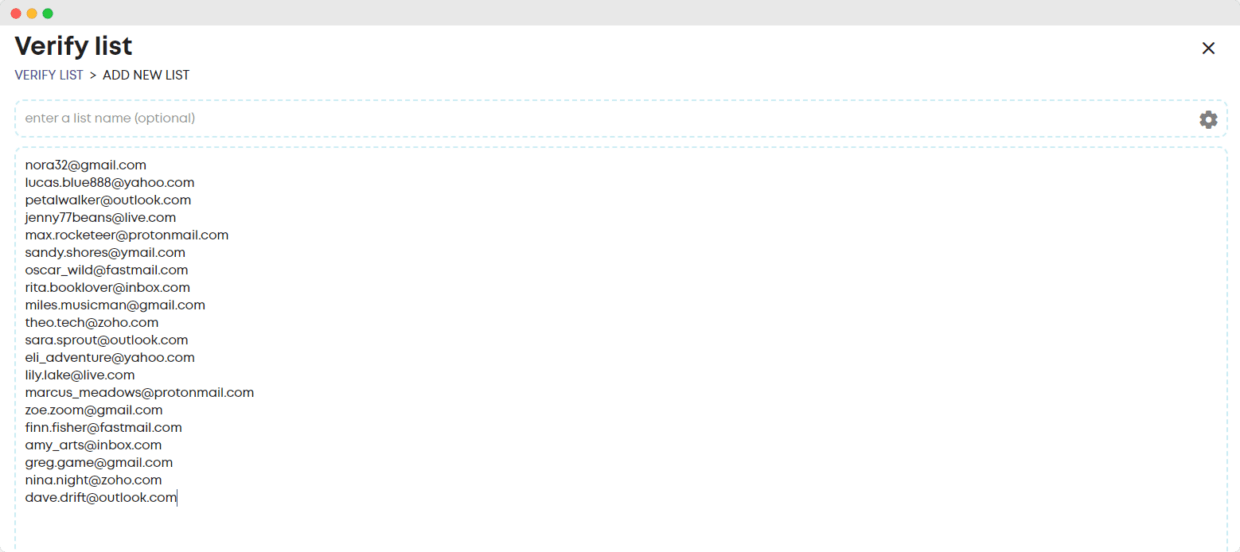
After a few seconds, you will get your results. First, it will show invalid email addresses, duplicates, and toxic emails. Bouncer will also indicate whether or not your list needs cleaning.

Click Start Now. Bouncer goes through the next steps like checking catch-all emails, spam domains, and risky, and undeliverable emails. You can download the list to get more info:

After downloading, you will receive a spreadsheet with all the details you need regarding the email verification process.

And there you have it! A list that’s verified and ready for a fresh email campaign, all thanks to our email checker.
Conclusion
By now, you’ve learned that validating your email domain is like giving your email strategy a supercharge.
It’s about making sure your emails not only land in the inbox but are also welcomed there by the intended recipient.
Think of it as your email’s passport to credibility. Without it, you’re just another face in the crowd of spam risks. But with validation, you step into the spotlight as a trusted sender.
Your rewards? Lower bounce rates, fewer spam complaints, and a noticeable boost in deliverability and engagement. All these perks lead to the ultimate prize: a healthier ROI on your email campaigns.
If you want to boost your email strategy, try Bouncer, the free email checker, now!


